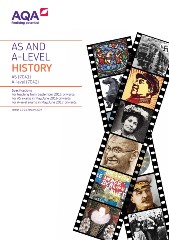1D Stuart Britain and the Crisis of Monarchy, 1603–1702
This option allows students to study in breadth issues of change, continuity, cause and consequence in this period through the following key questions:
- How far did the monarchy change?
- To what extent and why was power more widely shared during this period?
- Why and with what results were there disputes over religion?
- How effective was opposition?
- How important were ideas and ideology?
- How important was the role of key individuals and groups and how were they affected by developments?
Part one: absolutism challenged: Britain, 1603–1649
Monarchs and Parliaments, 1603–1629
- The Political Nation and the social basis of power: the importance of land ownership; rival forms of wealth including merchants
- James I: character and views on monarchy; court and favourites; Charles I: character and views on monarchy; court and favourites
- The financial weakness of the Crown and attempts to reform and strengthen royal finance
- Religion and religious divisions: challenges to the Church of England from Catholics and Puritans and the development of Arminianism
- Relations and disputes with parliaments: parliamentary privileges; finance; religion; foreign affairs
- The state of relations between Crown and Parliament by 1629 and the reaction of the Political Nation; the extent of breakdown between Crown and Parliament and the Political Nation
Revolution, 1629–1649
- Divisions over religion: Arminianism and Laudianism; Puritanism and the emergence of Millenarianism
- Political divisions: the Personal Rule and the extent of opposition to it in England, Scotland and Ireland; the Short and Long Parliaments and the leadership of Pym; divisions and the outbreak of Civil War
- The First and Second Civil Wars: England, Scotland, Ireland and the reasons for royalist defeat
- Social divisions: the emergence of political and religious radicalism in the 1640s; the Levellers and Millenarian groups
- Post-war divisions between Army and Parliament and the failure to secure a post-war settlement
- Regicide: the basis for regicide and the King’s response
Part two: Monarchy restored and restrained: Britain, 1649–1702 (A-level only)
From Republic to restored and limited monarchy, 1649–1678 (A-level only)
- The consolidation of the Republic: Scotland and Dunbar; campaigns in Ireland; Charles II and Worcester
- Political divisions and experiments: Republicanism and the Rump; Millenarianism and the Parliament of Saints
- Cromwell and his aims; the Protectorates; Major-Generals and the relations with the Political Nation
- Charles II and the nature of restored monarchy; rule through parliament and ministers; Clarendon; the Cabal and Danby
- The emergence of Court and Country ‘parties’: causes, significance and consequences
- Religious divisions and conflicts: the defeat of Millenarianism; the restoration of the Church of England; Protestant Dissenters; conflict over Catholic influence at Court
The establishment of constitutional monarchy, 1678–1702 (A-level only)
- Political developments and conflicts: Exclusion, its aims, methods and its failure; James II and the attempts at absolutism and the restoration of Catholicism
- The ‘Glorious Revolution’: causes and nature; its consolidation in England, Scotland and Ireland
- Divisions within the Political Nation and the emergence of Whigs and Tories and their impact
- Religious changes: religious toleration and changes to the position of Anglicans, Protestants and Catholics
- Government under William and Mary: the importance of political parties and ministers; the changing influence of Crown and Parliament and the reasons for the development of limited monarchy
- The condition of Britain and its monarchy by 1702: the significance of the Act of Settlement; the balance of power between Crown and Parliament; the condition of the Church of England and non-conformism and Catholicism
